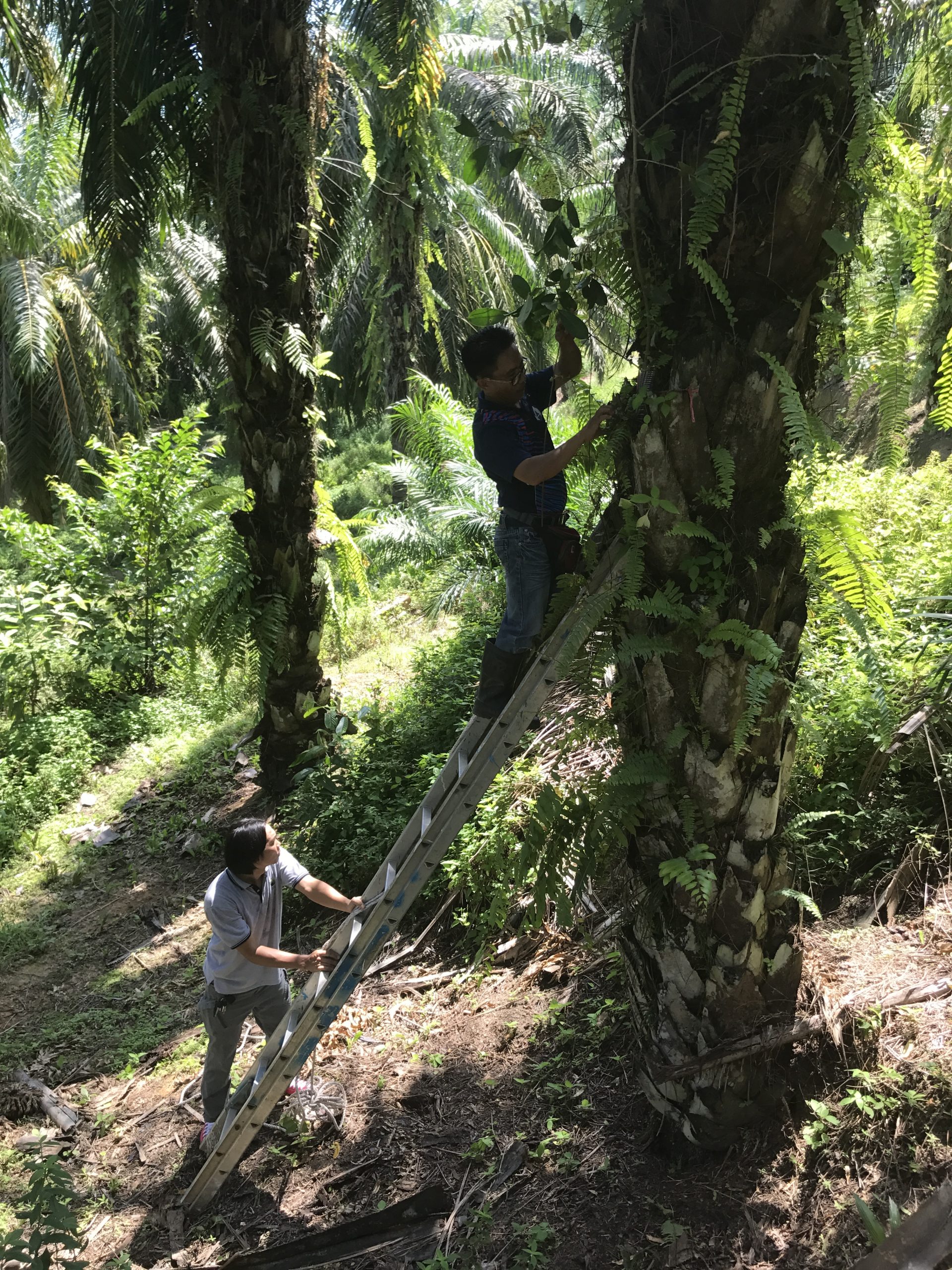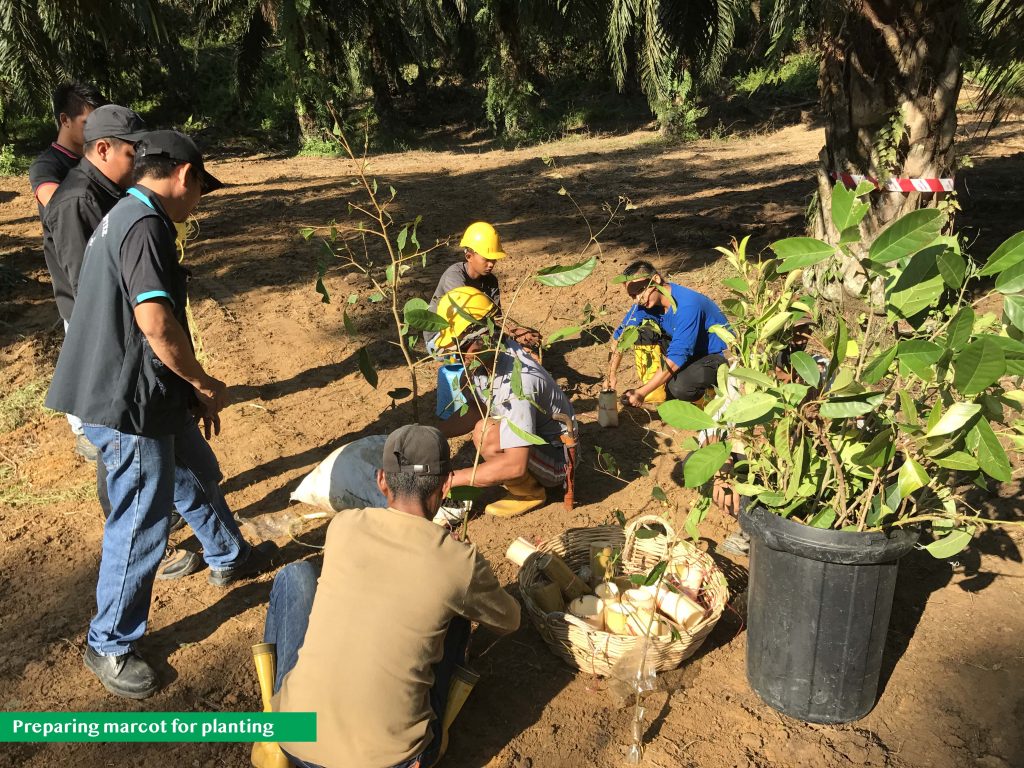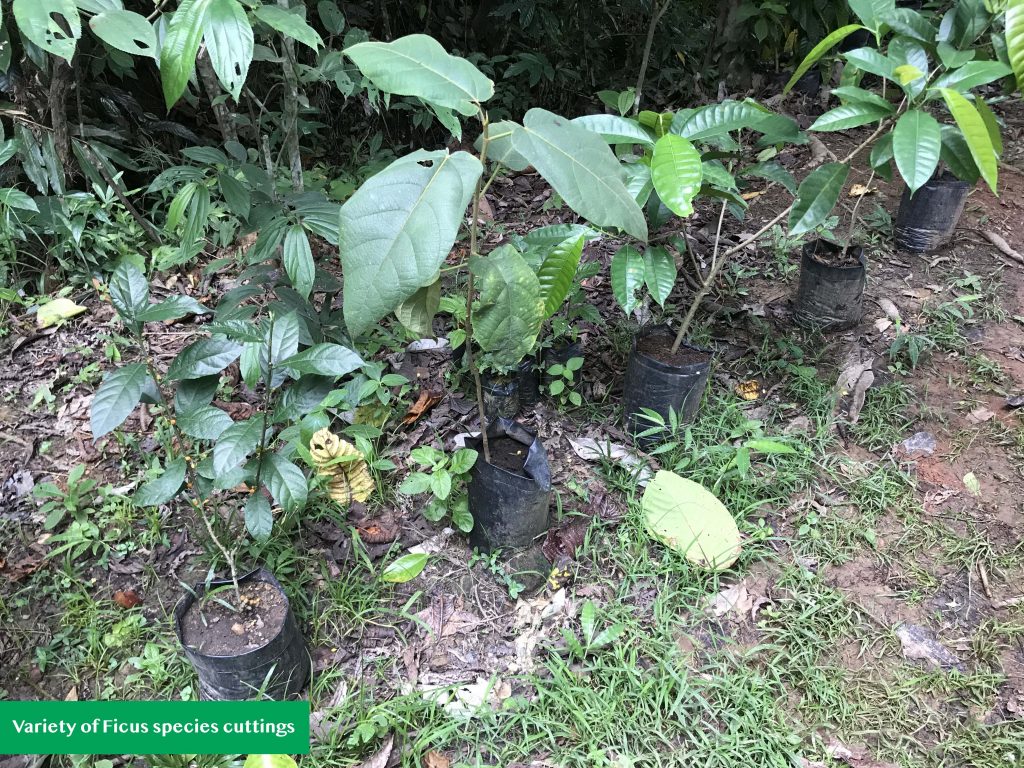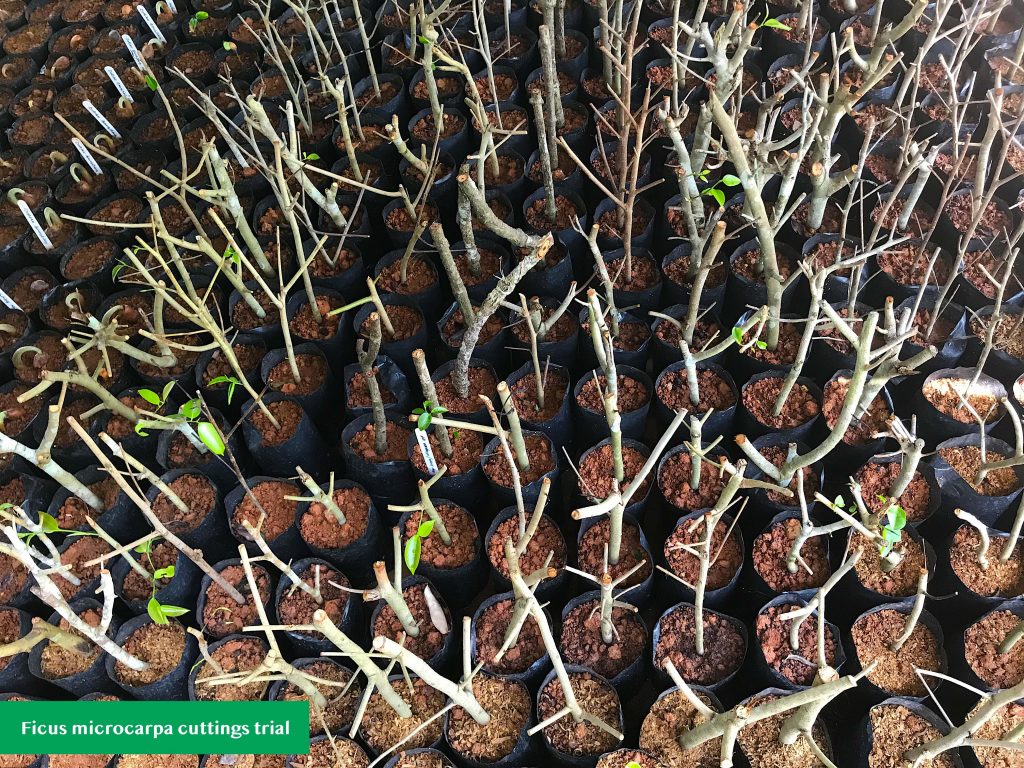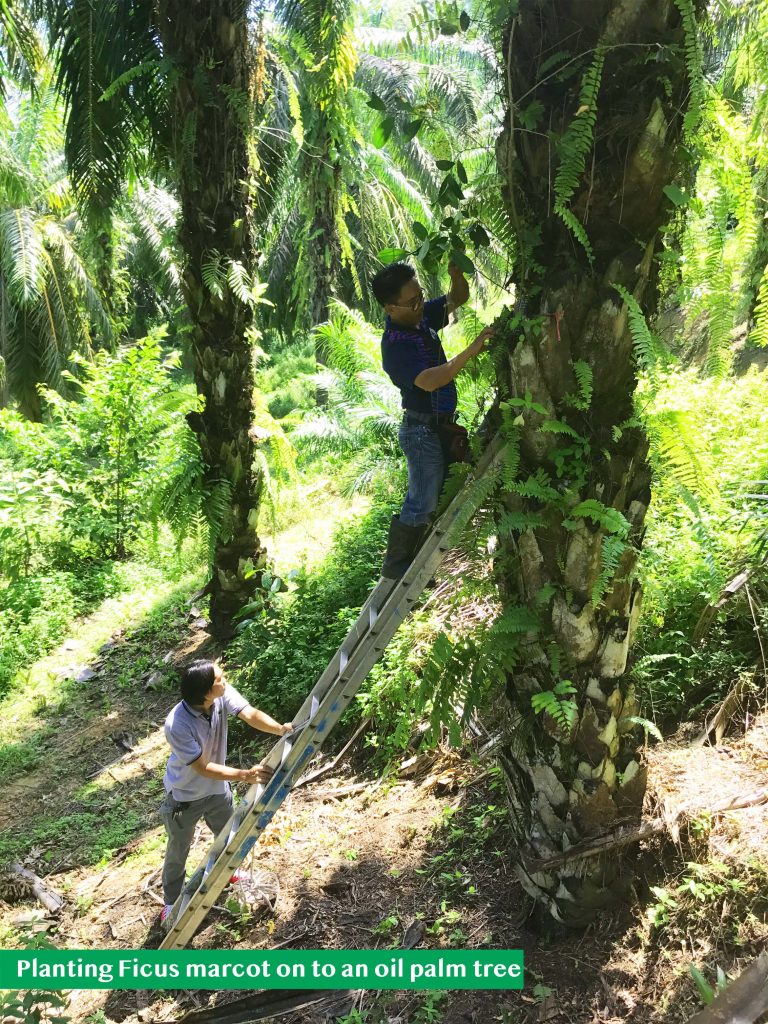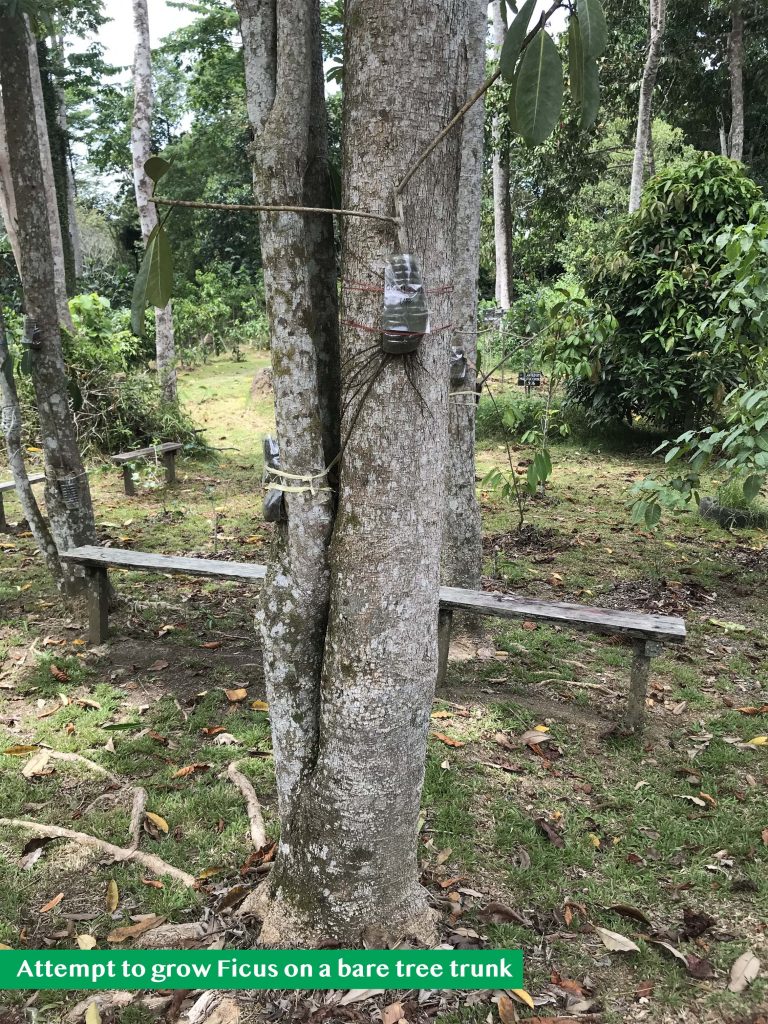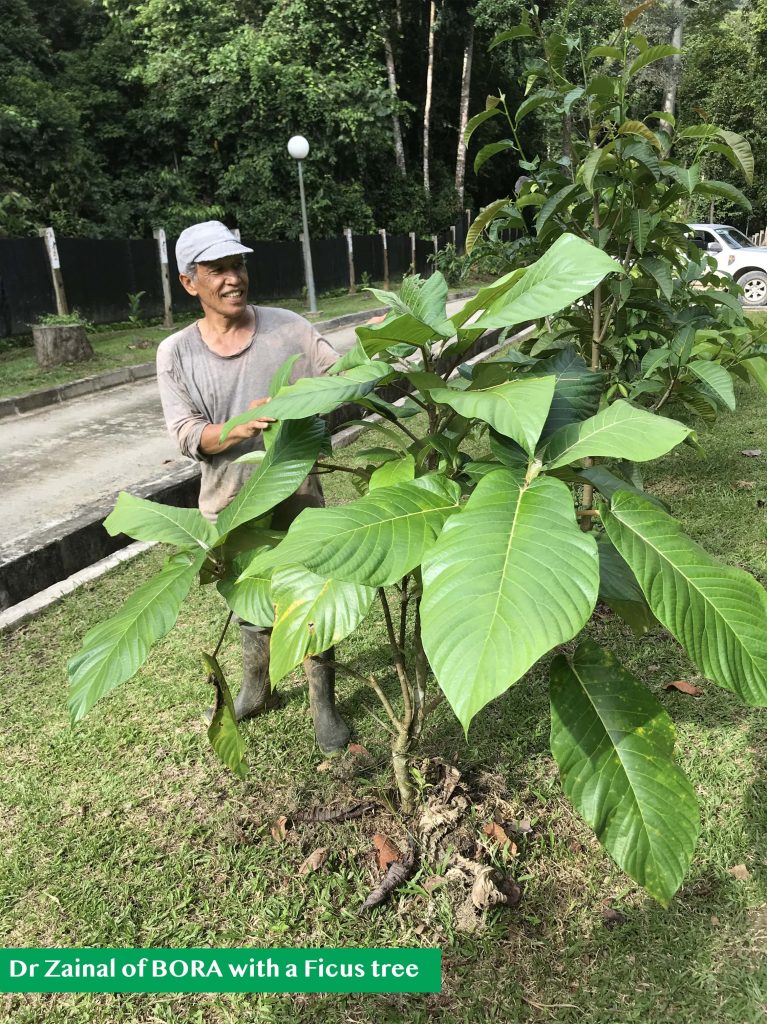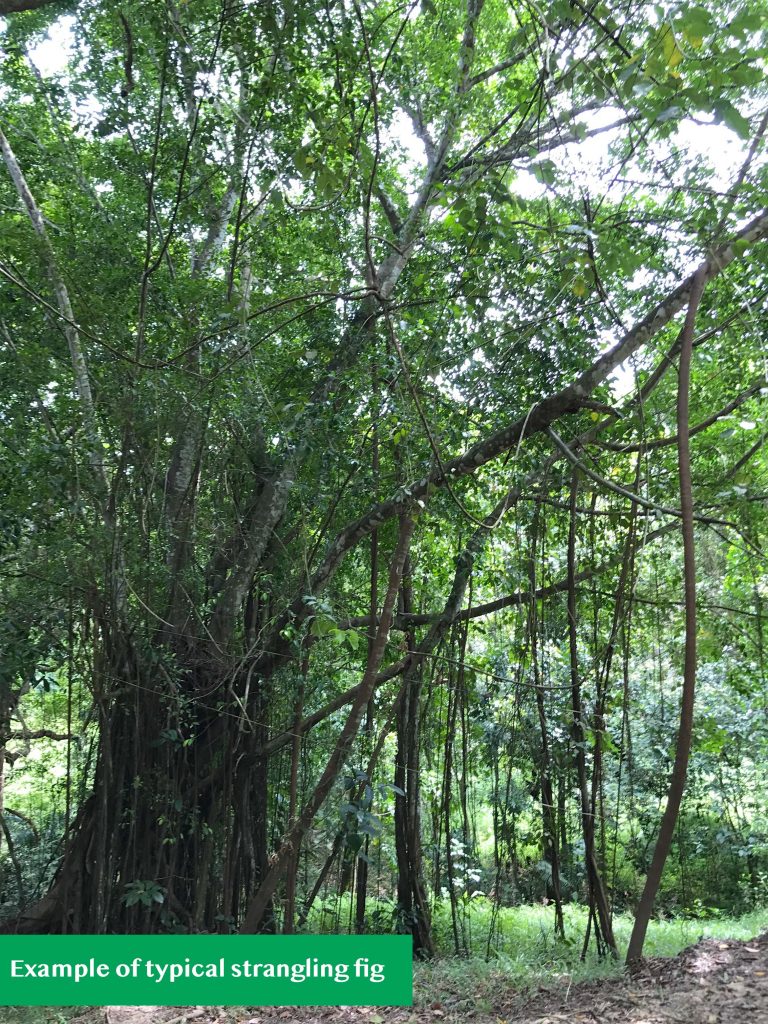
It is probably fair to say that the most important biological requirement of all animals is food. All other things being equal, the greater is the productivity of any wild animal species favourite foods in the place that it lives, then the more individuals of that species can live and thrive. Unfortunately, in oil palm plantations, the fruits attract rodents and wild pigs. Orangutans, on the other hand, do not much like oil palm fruits, although some will nibble on them occasionally. It turns out, from studies over the past few decades, that wild orangutans feed on a very wide range of plant species and plant parts, as well as insects. But consistently, the top two things in their diet are fruits of wild fig plants, and the leaves, shoots and fruits of woody lianas of the legume family.
Commonly known as fig in English, scientifically as Ficus, ara in Malay and Indonesian, and nunuk in Sabah, there are over 150 species in Borneo, including tall trees, small trees, stranglers, epiphytes and climbers. A fig “fruit” is actually an arrangement of many small flowers within a receptacle, known as a syconium, but for convenience, we call them fruit. Figs are “keystone”, meaning a genus of plants that has a disproportionately large effect on the functioning of its natural environment relative to its abundance.
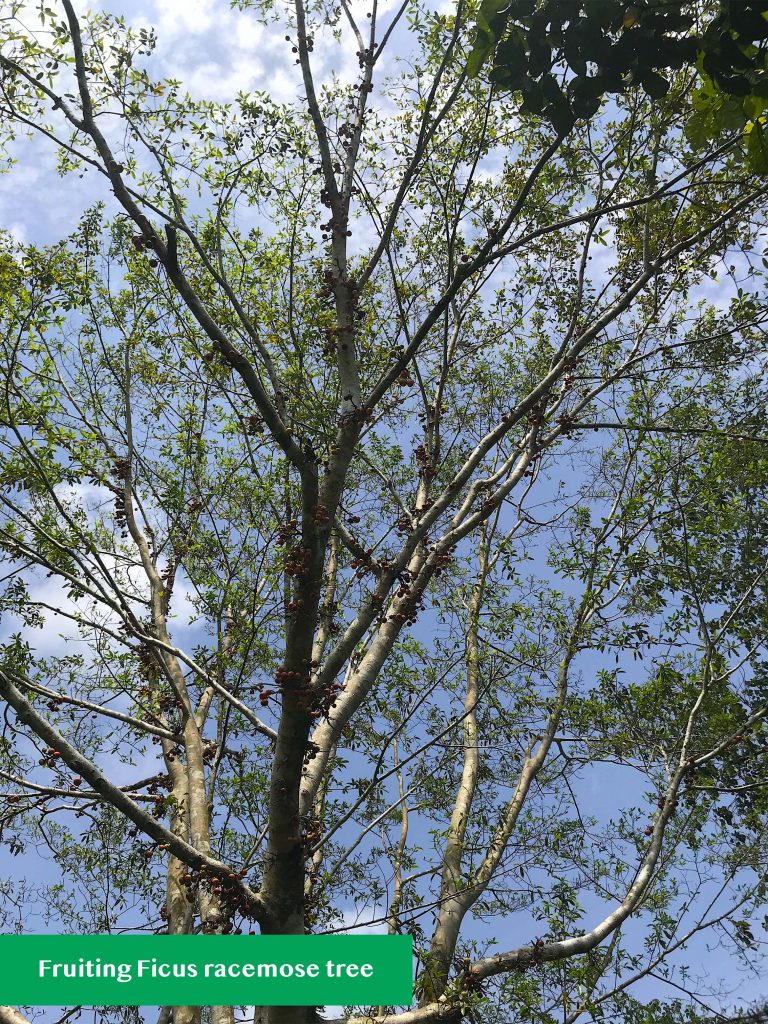
The importance of figs lies in the facts that orangutans and many other mammal and bird species relish them, and that in any one area at any one time, there are almost always fig plants bearing fruits. Figs are “keystone”, meaning a genus of plants that has a disproportionately large effect on the functioning of its natural environment relative to its abundance. The importance of figs lies in the facts that orangutans and many other mammal and bird species relish them, and that in any one area at any one time, there are almost always fig plants bearing fruits.
PONGO Alliance’s NGO partner, Borneo Rhino Alliance (BORA) has started planting a selection of fig species in 2012, in Tabin Wildlife Reserve, Sabah, as a means to supply leaves to critically endangered Bornean rhinos, which favour several species of fig leaves as food. At that time, it was imagined that there would be several rhinos living in the Borneo Rhino Sanctuary facilities in Tabin Wildlife Reserve. Sadly, that was not to be. Instead, BORA re-formulated the former rhino food garden as a unique resource where living fig plants of over 70 species now form a source of planting materials to support PONGO Alliance’s enrichment planting program.
Starting in 2018, BORA, as a PONGO Alliance partner, has been producing fig planting materials for oil palm plantations, to be planted and grown on selected sites within plantations in the Kinabatangan landscape. In 2019, Quentin Phillipps, creator of The Figs of Borneo blog (https://borneoficus.info) provided funding to upgrade the site as a nursery. In February 2020, the Sabah Forestry Department gave official recognition to this resource, as the “Sabah Ficus Germplasm Centre”. So now there is a combined arboretum, genetic resource bank and nursery specialising in figs.
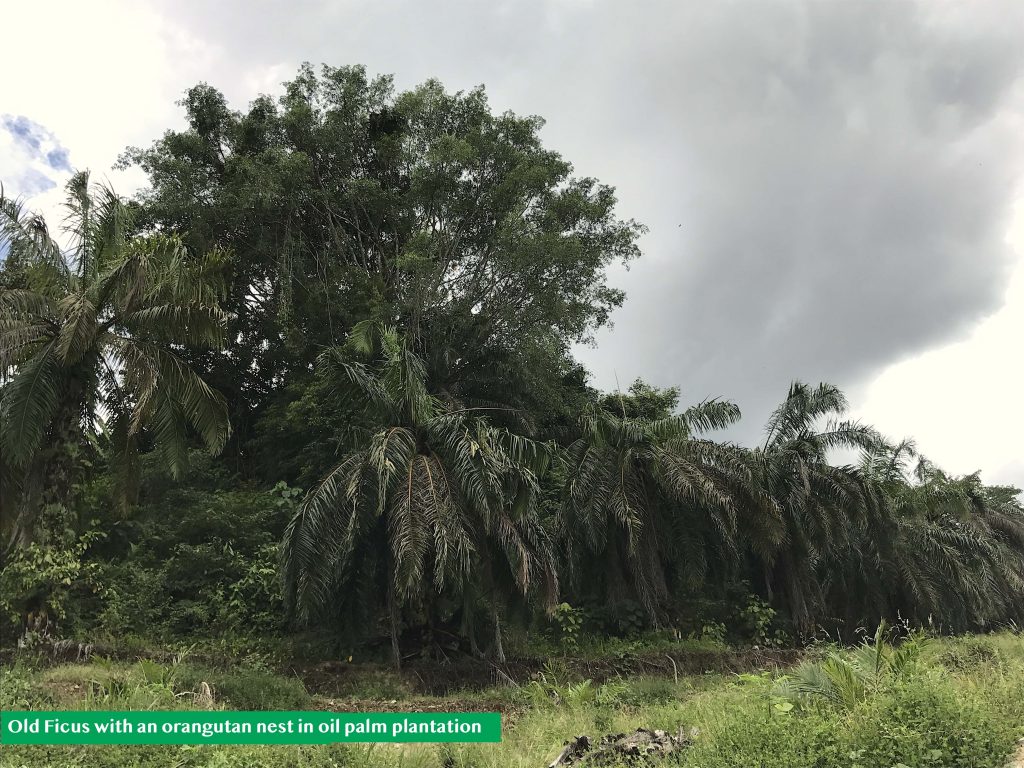
PONGO Alliance provides restoration techniques and specific recommendations for enrichment of set-asides that support growth for plants that are useful to both wildlife and people.
